Dear Barbara,
I arrived late in Krakow. Once again, exactly like in Warsaw, I didn’t seem to have a proper first impression. The city was dark, and it was really cold. I guess I should rephrase that: it was freezing in Krakow. It’s been a while since I was last exposed to -13 C. I thought that if I touched my nose, it would break into pieces. As if this wasn’t enough, there was some light snow, too.
The snow was so thin that I wouldn’t normally mention it. But here’s the thing. Once the Uber arrived, I had a few snowflakes on my jacket. Their shape was beautiful, and I even took a photo of them. Then, I entered the Uber. It was not a very long ride; I guess it took 7-8 minutes in total. Guess what? It was so cold even in the car that when I disembarked, the snowflakes were intact on my jacket! I have never experienced that before.
At least I stay in a very warm hotel. I mean, in Eastern Europe, the hotels are always insanely warm: you might need two jackets and three scarves to walk outside, but inside the hotel, you’re fine with just a t-shirt.
Twenty years later
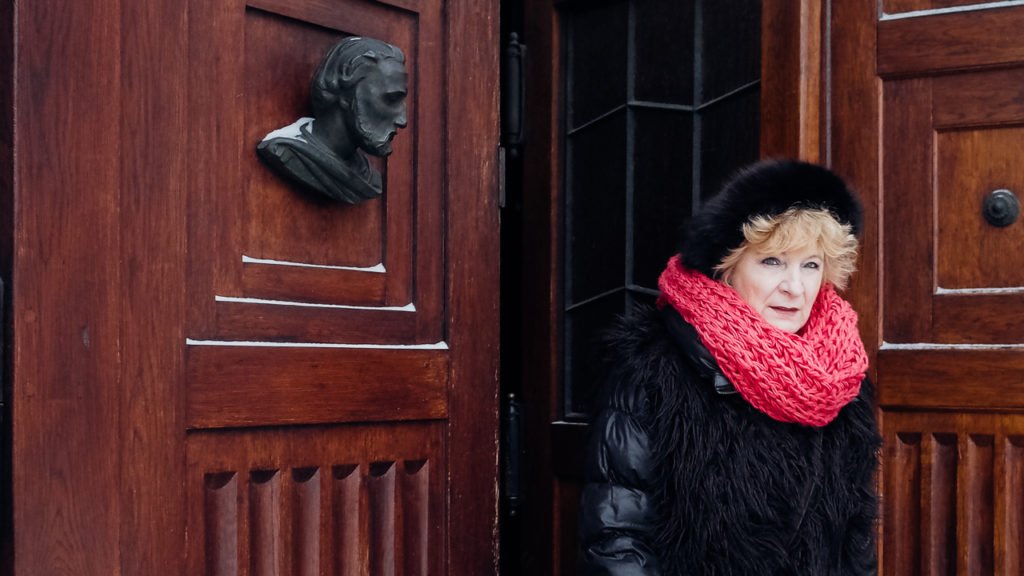
I left the hotel in Warsaw at 10 am, and now that I’m typing these words, it’s already 9 pm. I feel tired, a bit cold, and hungry. A long day outside comes to an end only when I find a decent restaurant. Otherwise, if the dinner is bad, that day haunts me, and I know that I should make an even better choice tomorrow. That’s how travel writers spend their money sometimes: they try to win bets against themselves.
But tonight, I promise not to be hard with myself. After walking 5 hours non-stop in Warsaw (Google maps said it was 21,3 kilometers), after traveling from Warsaw to Krakow by train, all I need now is some food. Actually, whatever food. My teeth chatter because of the cold wind, and I promise myself that I will enter the first restaurant I’ll find on my way. And if it’s costly? If it’s not my taste? Or, if it looks miserable? Never mind, I’ll enter.
But to be honest, I never thought that the first restaurant I’ll see would be a Greek one. I never thought that entering the first restaurant I’d find will break another promise, one that I made twenty years ago in Vienna. Back then, I had an awful night in a Greek restaurant, mainly because the owners were fascists. I was so pissed off that I promised never to revisit a Greek restaurant abroad. Not because all of them are bad (on the contrary, I hear good things all the time) but mainly because I have the talent to attract such people. I didn’t want to risk another encounter like the one in Vienna.
But here I am, standing in front of a Greek restaurant in Krakow. Well, it’s a promise, I think, therefore I enter the restaurant. It’s a Tuesday night, shortly before closing time, and the taverna is almost empty. I take a table in the corner, and I order two souvlakia. The food is decent, but I realize that I betrayed that old oath after the first bite. I stay for almost an hour there, and I wonder why sometimes one promise has to break another one.
The Old Town of Krakow is stressful
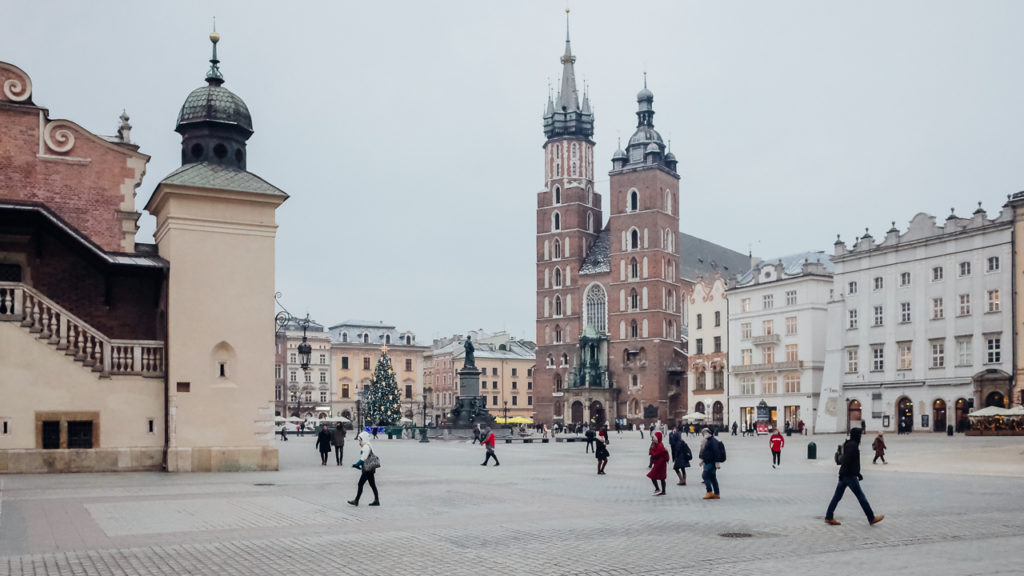
I read everywhere that one of the best things to do in Krakow is to walk around the Old Town. And that’s what I do from my very first morning there. Actually, I return every morning to the Old Town of Krakow, and I try to change my opinion about it. Unfortunately, my opinion doesn’t change. On the contrary, it gets worse: I am disappointed. And mainly, I’m pissed off.
The Old Town of Krakow is a brilliant example in more than one case. It is an architectural objet d’art, a pearl that is hard to find elsewhere. That’s probably where the problem starts: the Old Town seems to be sold exclusively to mass tourism. I don’t get a feel of the local vibe, every second building appears to be a hotel, there are no Krakowians there, and all the tourists seem to stay in AirBnbs around the square.
I try to spend some time at the Rynek Główny, the Old Town’s legendary square, that dates from the 13th century. Even if it is again insanely cold (-12 C), I want to stay still for a while in front of the buildings. There are loads of old brick buildings (in Polish: kamienica) and palaces. On the ground floors of the buildings, there are coffee shops and stores. This is the largest square of all the medieval cities of Europe. There you will see the 16th century Renaissance Cloth Hall; you will admire the Basilica of the Virgin Mary, and the impressive Town Hall Tower. There are 47 buildings on the square, each one of them carrying History. For the traveler who appreciates architecture, this place is a treasure and a spot for reflection.
So what do you really want to do in the Main Square of Krakow’s Old Town? To stand still and admire, of course. Well, that’s impossible. Every thirty seconds, you will be interrupted by some guys trying to either give you a flyer for a nearby establishment or wanting to advertise a coffee shop, a restaurant, a strip club, a whatever. Apart from the tons of garbage that those flyers produce and no one reads, it is irritating to apologize twice per minute that you are not interested in.
The first morning, I spend thirty minutes at the Rynek Główny. During this short period of time, approximately 50 guys approach me, wanting to inform me about their establishment. It is totally impossible to observe uninterrupted the square, take photos, or simply find your peace of mind. Mainly, it’s nerve-breaking to deal with this old fashioned sort of marketing. No matter where I walk in the Old Town, somebody is always trying to sell me some useless info.
I try to walk around the Old Town three more times. But nothing changes, and my mood is ruined. This is not an Old Town, but a playground for tourists. I wonder what sort of plan is to sell the most historical section of a beautiful city. This should be a case study on how to avoid ruining a city. If this is assumed a success story, I rest my case.
At least there is Kazimierz
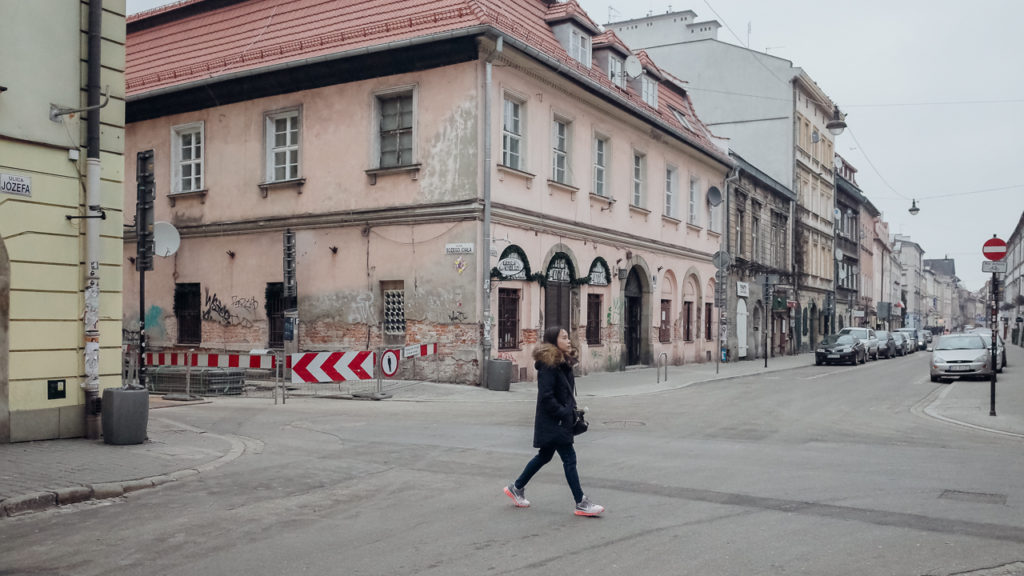
After being frustrated in the Old Town of Krakow, I take a walk at the Wawel Castle. It emerges from the ground like a jewel, and it has plenty of space to relax. I find it odd that taking photos in the Cathedral is not allowed, but it doesn’t matter much to me. I walk every day for half an hour around the Castle, and I feel the cold wind on my face.
And then I head to Kazimierz. This is the old Jewish neighborhood of Krakow and the most culturally focused district of the city. There is a laid back atmosphere in Kazimierz that reminds me of Kreuzberg in the early ’00s. I talk with lots of people in the Kazimierz area, and everyone tells me that there is an ongoing gentrification process here, too. I tell them about what is happening in Berlin, and they complain about prices and how fast the district is changing. There are locals here and lots of ex-pats who felt at home in Krakow and stayed.
Under the current tourist plan of Krakow, Kazimierz won’t probably survive for long. I don’t like to see historical districts transforming into faceless neighborhoods. I truly hope that Kazimierz will remain for a long time the most charming district of downtown Krakow. But I doubt it.
The milk bars of Krakow

I initially wanted to come to Krakow and make a tribute to the milk bars. But, as you know from Warsaw’s travel letter, this journey didn’t go as I planned it. No matter what, I’m still curious about the milk bars, and I try to visit one every afternoon for a quick lunch break.
The milk bars (or in Polish: bar mleczny) are an essential part of Poland’s post-war history. The first milk bar opened in Krakow in the late ’40s and was a place you visited to drink milk. They served it in 250 ml glasses, which was part of a well-executed plan of the Communist Party. Poland had massive dairy products production; therefore, the government tried to make milk popular to keep the citizens away from alcohol. The milk bars also provided dishes based on dairy products, and sometimes eating at a milk bar was included in the salary.
The collapse of communism was also the end of an era for the milk bars. Most of them had to shut down, but there are still a few operating nowadays. Krakow still has several ones. You can eat different dishes (not anymore solely based on dairy products) at meager prices. Krakow’s milk bars are actually time-capsules because there are so many things from the late ’80s: the faces of the employees, the cutlery, the decoration, the dishes. The milk bars don’t stay open until very late, some of them operate till 6 pm, others shut at 7 or 8. I usually go to the milk bars before 5 pm because after that time lots of dishes are not available anymore.
The food quality in the milk bars of Krakow is really decent. In the end, I manage to visit only 3 of them: the Milkbar Tomasza, the Pod Temidą, and the Bar mleczny Flisak. The first one is a more contemporary version of the milk bar, and it looks a bit mainstream. However, the other two retain their character intact.
Light snow, a question & a man
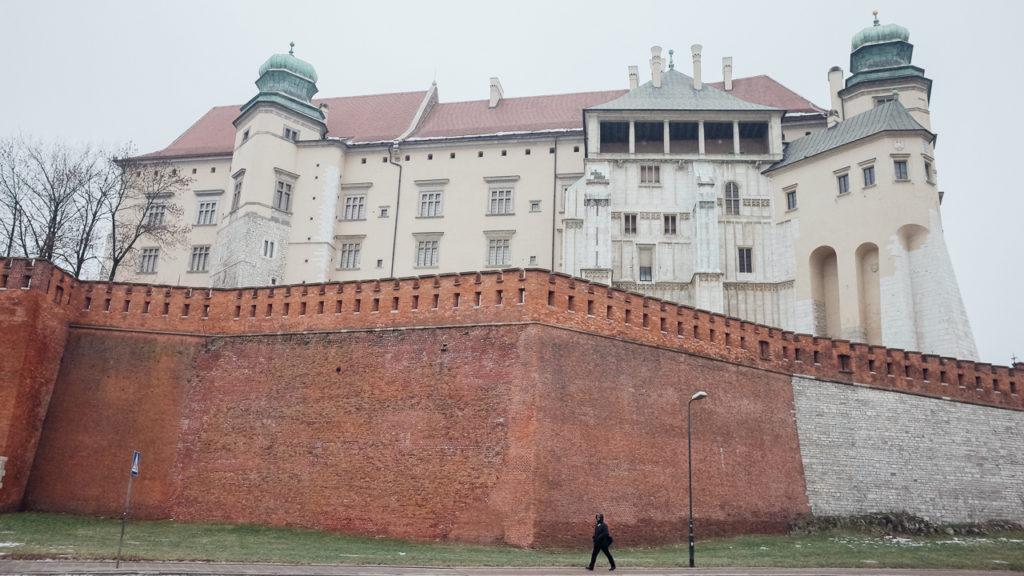
I’m done writing, I’m done exploring. It’s the last night in Krakow, and my flight departs at a brutal time in the morning. What I dislike the most about early flights is the fact that they shorten my nights. I need the night. I check the ticket: departure at 8:30 am. Gosh.
It’s almost 11 pm, and it’s snowing for more than two hours. There is a thick white blanket everywhere in Krakow. I decide to leave the hotel and walk a bit around in the snow. I have some remaining zlotys in my pocket, and I want to spend them. Instead of changing the local money back to euros, I always prefer to spend them. It might be a minor help for the local economy, but it’s still better than paying commissions and getting even less money back.
There’s a dead-empty bar at the end of the street, and I decide to give it a try. Sometimes the best stories appear in the most unexpected places. But tonight, the bar remains boring all night long. I sip an Americano slowly, and I look outside the window. The snowfall gets stronger after a while.
Don’t get me wrong: Krakow is beautiful. But I also wonder: why did you do this to yourself, Krakow? Why did you abolish all your local color and became a soulless playground? I can’t believe that all men are approached by other men in this gorgeous Main Square that try to bring them to strip clubs overlooking the square. Overlooking is an exaggeration: the windows are dark. This is not about ethics; it’s mainly about aesthetics. I wanted to see your life, Krakow, but instead, the city center felt empty. Why, Krakow?
On my way back to the hotel, a homeless man asks me for some money. I empty my pockets, and I give him all the zlotys I have. I’m sure it’s not enough for accommodation, but maybe he can get something to eat. He says he is 62 years old. He used to work for the railways. Nowadays, he lives on the streets. He sleeps wherever there’s a spot to sleep. And then he walks away in the snowfall, with dignity.
Take care,
George
More about Krakow: Things to do in Kraków
More about Poland: Chopin’s heart in Warsaw & Charming Poznan
Pin it for later
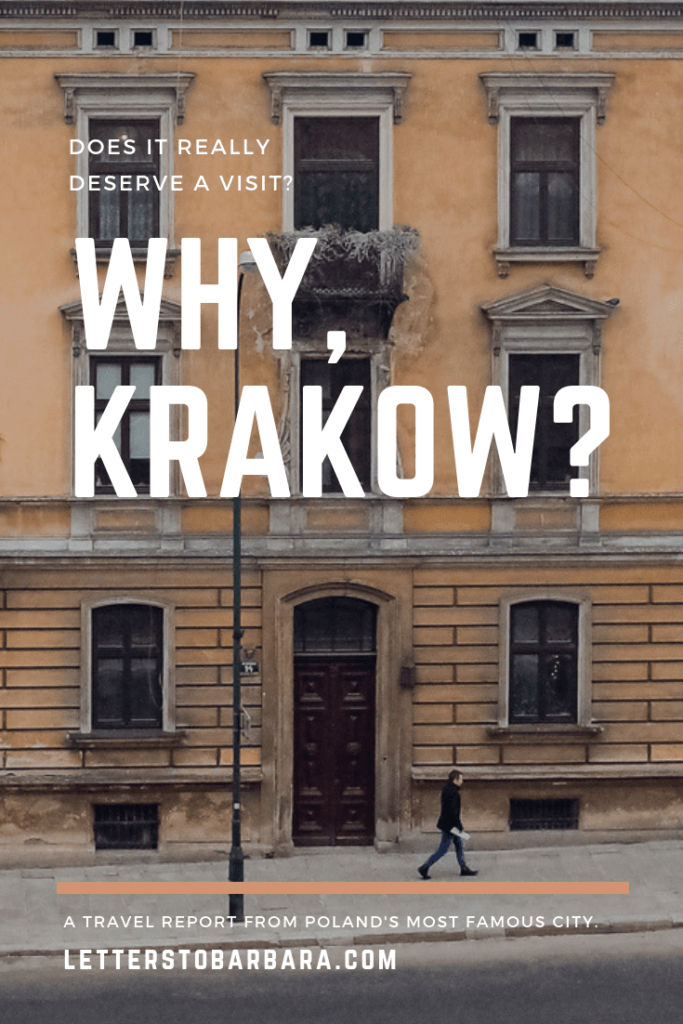
Please share, tweet, and pin if you enjoyed reading Why, Krakow? Your support keeps this website running and all the info up-to-date. 🙂
Last Updated on November 12, 2020 by George Pavlopoulos

